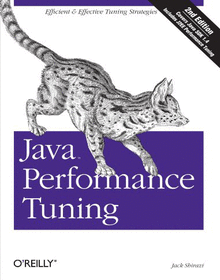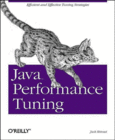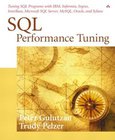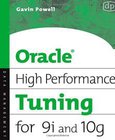Java Performance Tuning
2nd Edition

Book Details:
| Publisher: | O'Reilly Media |
| Series: | OReilly , Performance |
| Author: | Jack Shirazi |
| Edition: | 2 |
| ISBN-10: | 0596003773 |
| ISBN-13: | 9780596003777 |
| Pages: | 600 |
| Published: | Jan 01 2003 |
| Posted: | Nov 19 2014 |
| Language: | English |
| Book format: | CHM |
| Book size: | 1.08 MB |
Book Description:
Performance has been an important issue for Java developers ever since the first version hit the streets. Over the years, Java performance has improved dramatically, but tuning is essential to get the best results, especially for J2EE applications. You can never have code that runs too fast.Java Peformance Tuning, 2nd edition provides a comprehensive and indispensable guide to eliminating all types of performance problems. Using many real-life examples to work through the tuning process in detail, JPT shows how tricks such as minimizing object creation and replacing strings with arrays can really pay off in improving your code's performance.Tuning J2EE applications bears many similarities to tuning J2SE apps, but important and specific considerations apply. For this reason, Java Performance Tuning, Second Edition includes four new chapters: a new chapter on J2EE application tuning in general followed by chapters on tuning JDBC, servlets and JSPs, and EJBs.Java Performance Tuning offers common-sense advice about what to tune and what to leave alone, emphasizing techniques that provide big performance gains with minimal code restructuring. It gives you crucial guidance that helps you tune without destroying your program's architecture. Blindly changing things in an effort to make a program run faster is a great way to create buggy, unmaintainable code. Java Performance Tuning teaches you to work efficiently and effectively, resulting in code that is robust, maintainable, and fast.Java Performance Tuning, Second Edition shows you how to:Create a performance plan Glean information about your program's behavior from profiling tools Identify bottlenecks before tuning Minimize the number of objects your program creates, particularly critical for J2EE applications Optimize the use of strings Avoid performance penalties from inefficient code Improve the behavior of loops and switches Optimize I/O behavior Use appropriate algorithms for sorting and other common tasks Use threads effectively Optimize the performance of distributed systems Speed up servlets and JSPs Structure JDBC usage efficiently Use effective design patterns to optimize EJB performanceCovers JDK 1.4
Download Link:
Related Books:
Java Performance Tuning
No matter what language they're programming in, developers always wish things would run faster! Especially when writing mission-critical applications, no one wants to be limited by the programming environment. Java Performance Tuning provides all the details you need to know to "performance tune" any type of Java program and make Java code run significantly faster.Java Performance Tuning contains step-by-step instructions on all aspects of the performance tuning process, right from such early considerations as setting goals, measuring performance, and choosing a compiler. Extensive examples for tuning many parts of an application are described in detail, and any pitfalls are identified. The book also provides performance tuning checklists t...
SQL Performance Tuning
A poorly performing database application can cost each user time, and have an impact on other applications running on the same computer or the same network. This book will help DBA's and programmers improve the performance of their databases. It is not an introduction to SQL, nor is it a tuning manual for a particular SQL implementation. It is a guide for users and programmers who want to improve SQL performance no matter what brand of SQL they use. It will provide tuning tips for common situations, such as how to change a query so it will go faster and how to shift work from the server to the client. All the ideas have been tested against the eight leading DBMS applications. Almost all large organizations and companies today run more than one type o...
Oracle High Performance Tuning
For 9i and 10g
There are three parts to tuning an Oracle database: data modeling, SQL code tuning and physical database configuration.A data model contains tables and relationships between tables. Tuning a data model involves normalization and de-normalization. Different approaches are required depending on the application, such as OLTP or a Data Warehouse. Inappropriate database design can make SQL code impossible to tune. Poor data modeling can have a most profound effect on database performance since all SQL code is constructed from the data model. Poorly written SQL code is often a culprit of performance problems and is expensive to rectify. However, tuning of SQL code is generally cheaper than changing the data model. SQL code tends to be contained inside inde...
2007 - 2021 © eBooks-IT.org



